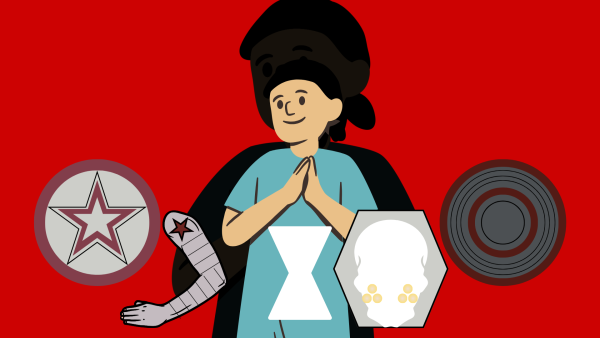Triangle Of Sadness is one of the most polarizing films of the past year
On May 21, 2022, Ruben Östlund’s Triangle of Sadness premiered at Cannes Film Festival to an unsuspecting crowd of high-brow critics and industry players. Östlund’s razor-sharp social satire split the audience into two. Numerous attendees walked out during a particular sequence in the film’s second act. The rest gave the film an 8-minute-long standing ovation. Seven days later, Triangle of Sadness won the festival’s Palme d’Or award, one of the most coveted achievements in cinema. Countless think pieces and debates on whether it deserved it ensued. I loved it.
Immediately within Triangle of Sadness’s opening scene, Östlund wastes no time in his shrewd observation of our society’s most ridiculous conventions, a precursor to what lies ahead.
Carl (Harris Dickinson) attends a casting call from an unnamed luxury-fashion brand in search of runway models. Shirtless men donning only blue jeans, six-pack abs, and shaved chests meander around a barren white soundstage, awaiting their turn to be scrutinized by snobby casting directors.
At last, Carl is called in for his audition and demonstrates his runway walk. He struts to the end of the room and back. A casting director tells him his face looks too concentrated. Carl relaxes his face and walks again. The casting directors murmur amongst themselves that he may need botox. A casting director tells Carl that he is not walking with enough rhythm and that “runway modeling is no longer about what is on the outside but what is on the inside.”
Carl walks back and forth again and again, each time adhering to a new nitpick. Yet to the naked eye, there is no difference. It is nearly impossible not to find the whole process completely trivial. It is one of many sectors of wealthy culture helmed by the rich and out-of-touch, and that is the world that Östlund sets out to satirize in Triangle of Sadness.
Triangle of Sadness, Swedish director-writer Ruben Östlund’s first English-language film, is split into three distinct chapters. The first of which, “Carl and Yaya”, serves as a prologue to the film’s central couple. After his audition, Carl gets his job as a runway model and meets fellow model Yaya (Charlbi Dean) at a fashion show. They begin to date and our peer into their relationship reveals one of superficiality. The tumultuous romance between the two “influencers” is one rooted in social media engagement and content. Though satirizing “influencers” is certainly low-hanging fruit, Östlund’s apt comedic screenwriting makes it worthwhile, a trait of his that kept my eyes glued to the screen rather than rolled back.
Leading into chapter two, “The Yacht”, in exchange for promotion and exposure the two receive tickets aboard a luxury cruise. Östlund establishes a rigid hierarchy amongst those on board. Atop are the passangers: a varied bunch of deep-pocketed capitalists with shaky moral-compasses. The freeloading Carl and Yaya roam amongst a Russian fertilizer tycoon with two wives, a lonely tech millionaire, a gingerly British elderly arms-dealing couple; the list goes on. Below on the hierarchy are the white-uniformed, grin-to-grin smiling service staff that are ordered to live by the workplace philosophy “the customer is always right”. Although, that is a tedious ask when the customers are as out-of-touch as theirs are. On the very bottom of the hierarchy are the thankless and disregarded maintenance staff, often the subject of cleaning after the messes of the latter two.
The melting pot of colorful passengers, dutiful staff, and the ship’s drunken, communist captain (Woody Harrelseon) anchored by Östlund’s haywire filmmaking style boils into comedic gold. But with a flurry of shows like The White Lotus or films like The Menu and Glass Onion: A Knives Out Mystery that fall under the same sub-genre of upper-class satire, Triangle of Sadness lies at risk of redundancy. Many will tell you that it does fall flat in separating itself from the pack. Any acclaim Triangle of Sadness has received has been met with accusations of a blatant script and and looming vapidness. Yet, I found that rather than simply observing the serene bubble in which the top 1% inhabits, Östlund pops it and documents the chaos that ensues.
As mishaps and miscommunication set off a disastrous domino effect that leads to everything from food poisoning to a pirate attack, the cruise ship is destroyed and many are left for dead. The rest, Carl and Yaya included, find themselves washed up ashore leading into chapter three “The Island”.
It is the great equalizer. Any false sense of order established in the first two chapters is gone in an instant as they sit stranded and starving with no other objective but to survive. The formerly wealthy and powerful become useless. Meanwhile, Abigail (Dolly De Leon), a formerly ignored maintenance worker on the ship becomes ”the captain” as she puts it and demands she be addressed. She is the one that catches the fish and she is the one that starts the fires.
Though her rise to power is at first justified, a wave of unjust greed and corruption follows. That is the bitter but potent note Triangle of Sadness leaves off on. Östlund emphasizes that when given the power to be such, we are all rotten, greedy, and corrupt. It is a cynical thesis but one delivered with such gravitas that makes it feel undeniable.
Working against its potent conclusion is its tedious pacing. Running at sixty minutes that could have been thirty, its third chapter can feel unfocused and its impact unconcentrated. It is the only stretch of the film where Östlund’s well of screenwriting excellence begins to run sour, but never for too long.
Ultimately, Östlund’s biggest fan is himself. He laughs at his jokes and pats his own back as the credits roll. When a filmmaker is as overwhelmingly committed to their vision as he is, it is a formula for polarization.
You will either be on board with Triangle of Sadness or you will walk the plank. Though at times I yearned for a tighter ship, I was on board.
Triangle of Sadness is available to stream on Hulu.

Sam Dababneh is a Junior at Niles North High school. This is third second year on North Star News. Read additional writing on samdababneh.com.







Cynthia Fey • Mar 7, 2023 at 11:04 am
Great review! I loved Triangle of Sadness too. My family and I watched it in chunks so we never got bored — although they work together, each of the three parts can stand apart as its own moral dilemma story.